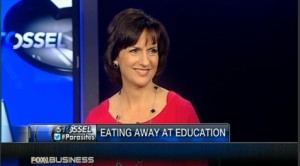By Jeanne Allen
The New Yorker
February 16, 2015 Issue
I read Alec MacGillis’s piece on the education reforms of Jeb Bush with a careful eye (“Testing Time,” January 26th). In my twenty-five years of experience in education, I have found that Florida’s success story surpasses that of all other states. When Bush became governor, in 1999, more than sixty per cent of minority and low-income fourth graders couldn’t read at a basic level, which doomed them to failure in future grades. Barely half of Florida’s high-school seniors were graduating. After Bush’s programs were enacted, Florida’s gains in math and reading, according to the federally funded Nation’s Report Card, were larger than they were anywhere else in the country—save Washington, D.C., which also used rigorous accountability systems and choice to improve education. The graduation rate has improved twenty-five per cent, and is at an all-time high. This reversal came about because Bush measured results, held schools accountable, and exposed them to competition. As adults vested in the system protested, student achievement accelerated. Business does have something to gain from this—an educated citizenry.












Future of Education in America Depends On Acceleration of School Choice
During a discussion at the Brookings Institution on the future of school choice and No Child Left Behind reauthorization efforts, Senate HELP Committee Chairman Lamar Alexander had an interesting exchange with Claudio Sanchez of National Public Radio (NPR).
Sanchez asked Alexander since the Supreme Court has ruled school vouchers to be constitutional, (see: Zelman v. Simmons-Harris), then why hasn’t the creation of voucher programs accelerated at a faster pace?
Alexander responded that the school choice movement, “hasn’t had enough Polly Williamses” to truly move vouchers forward in an accelerated fashion.
To give a little background, the late Polly Williams was a state Democratic lawmaker from Wisconsin who worked tirelessly with the Governor at that time, Republican Tommy Thompson, to install the first modern-day voucher program for low-income students in Milwaukee.
Williams and the school choice advocates of that era ignited a spark that would lead to the creation of voucher programs in 14 states and the District of Columbia, serving over 100,000 students and counting.
This is definitely progress, but as the premise of Sanchez’s initial question suggests, the school choice movement hasn’t gone fast enough.
New research from Dr. Matthew Ladner shows an 8.4 million projected increase in the number of school-aged children between 2010 and 2030. And many of these state level education systems are simply not equipped to handle this influx.
This trend, combined with a growing number of Baby Boomers entering retirement, will make the current levels of K-12 spending completely unsustainable.
Ladner recommends a multitude of school choice avenues as opposed to any one particular policy in order to adapt to the growing student population. Increased parental choice and operational autonomy in education will yield more cost-effective solutions, in addition to a greater return on investment.
The clock is ticking. The time to accelerate is now.